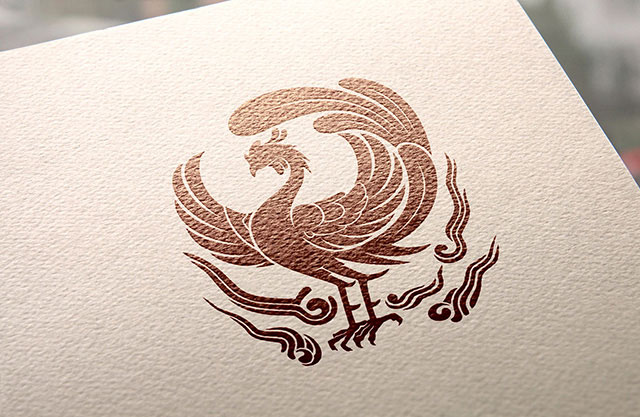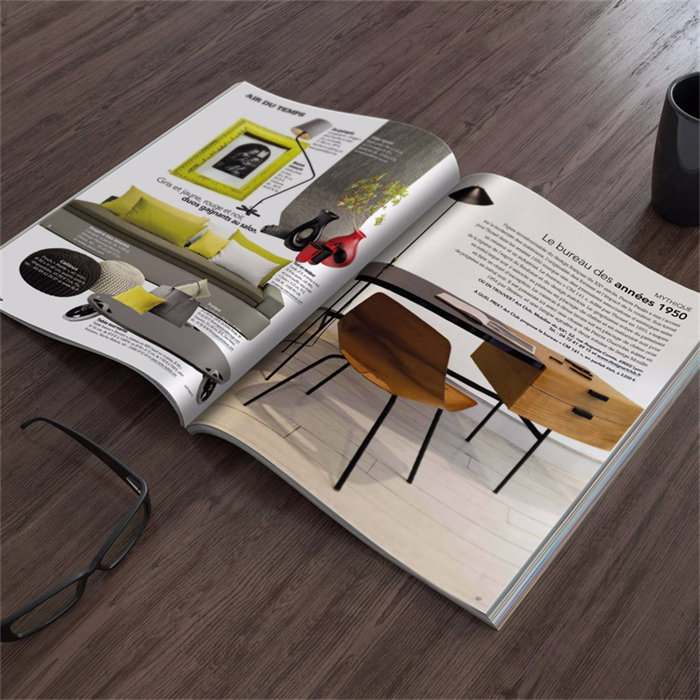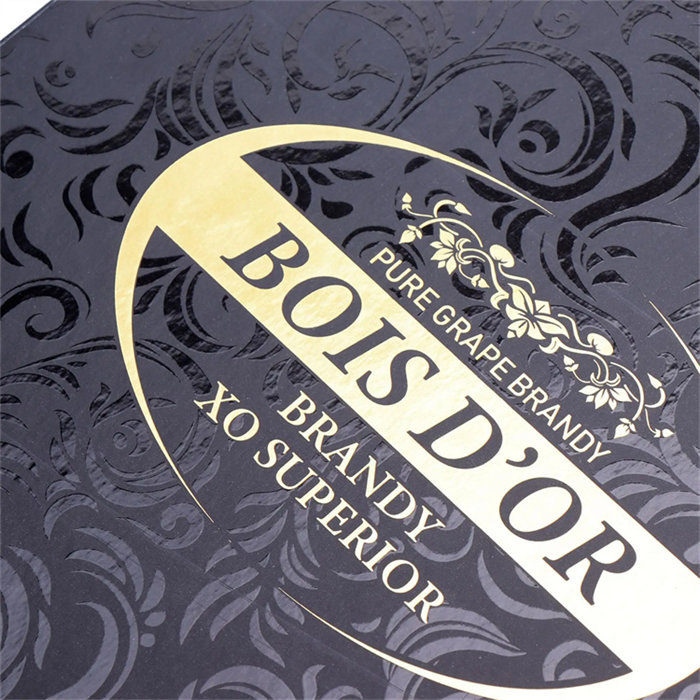fannyzeng's blog
Special paper is made from different fibers using a paper machine to produce paper with special functions. For example, raw materials such as synthetic fibers, synthetic pulp, or mixed wood pulp are used separately. And modified or processed with different materials to endow the paper with different functions and purposes.

Due to the wide variety and varying design effects. The following will only introduce the applications of several commonly used in printing special papers.
1. Plant parchment (sulfuric acid paper)
Because it is a semi transparent paper, sulfuric acid paper is often used as a ring lining or backing paper for books in modern design. Which can better highlight and set off the theme, while also in line with modern trends. Sometimes used as the title page of a book or picture album. Printing gold, silver, or graphics on sulfuric acid paper is unique and commonly used in high-end art albums.
It is also used for sulfuric acid paper in the production of architectural drawings and early printing and assembly of transfer media paper.
2. Synthetic paper (polymer paper and plastic paper)
Generally, synthetic paper is divided into two categories: one is fiber based synthetic paper, and the other is film based synthetic paper.
Synthetic paper has little difference in appearance from ordinary natural plant fiber paper. Thin film synthetic paper has entered the market of high-end printing paper and can adapt to various printing machines. Synthetic paper has excellent printing performance and will not experience "paper breakage" during printing. The surface of synthetic paper exhibits extremely small concave and convex shapes, which greatly helps to improve opacity. Synthetic paper has good image reproduction, clear dots, soft tones, stable size, and is not prone to aging.
3. Texture paper
The production of embossed paper involves the use of mechanical embossing. Or wrinkling to form a concave and convex pattern on the surface of the paper or cardboard. Embossed paper enhances its decorative effect by embossing, making the paper more textured.
Embossing can be divided into two types: overprint embossing and non overprint embossing. The so-called overprint embossing refers to pressing the printed flower shape into a concave convex shape according to the printed pattern, making the pattern bulge, which can play a beautiful decorative role.
Most of the domestic embossed paper is made of offset paper and whiteboard paper. The surface is relatively rough, textured, expressive, and diverse. Many art designers prefer to use this type of paper when plan to do book cover printing, title pages, etc. to express different personalities. Such as hardcover children's book printing.
4. Patterned paper
Designers and printers constantly seek innovative design styles to make their works stand out. Many times, patterned paper can make them even more beautiful. This type of high-quality paper product has a soft hand feel, a beautiful appearance, and a more noble and pleasing finished product. There are many varieties of patterned paper with different characteristics, which are higher in grade than ordinary paper.
Book publishers also require more durable paper and prefer it to be fresh and firm to ensure stable and consistent printing results. The product designed with antique effect paper is simple, beautiful, and elegant.
The trend of environmental protection is on the rise, and spotted paper has emerged. In order to achieve the effect of natural regeneration, various impurities have been added to the pulp. Some environmentally friendly recycled paper contains impurities such as minerals, floating snow, petals, etc. Its manufacturing techniques include adding dyes in the sizing process to make the paper form spots or create the parchment effect. This type of paper is highly popular among consumers and is the preferred choice for various certificates, book covers, restaurant recipes, and beverage lists.
Metal "Star Collection" can be used to produce various high-end printed materials, such as paper used as product samples, covers for annual reports and books, and for various packaging boxes.
There is a qualitative difference between gold paper and traditional gold foil. Traditional gold foil can only be printed using transparent materials and cannot be directly colored for printing. The gold paper developed using 24K gold as the material and nano technology can not only print color images directly on gold, but also retain the charm and performance of gold. It has the characteristics of oxidation resistance, color resistance, moisture resistance, and moth resistance, avoiding the shortcomings of traditional paper and books that are prone to mold and insects. In theory, it can be stored for tens of thousands of years.
Ordinary printing and UV printing are two different printing methods that offer different benefits and drawbacks.
What's ordinary printing?

Ordinary printing, also known as conventional printing, is a technique used by most modern printing presses. It generally uses four colors (cyan, magenta, yellow, and black) to create a wide range of colors. Ordinary printing can be done on various paper types including coated or uncoated papers and cardstocks.
Advantages of ordinary printing:
1. Cost-effective for large print runs
2. High-quality color reproduction for sharp images and text
3. Can produce a range of finishes like gloss, matte, or satin
4. Wide variety of paper types available
1. Longer setup time required
2. Limited printing capacity
3. Takes longer time to dry which makes it easy to smudge
4. Not suitable for printing on non-paper substrates
What's UV printing?

UV printing is a newer printing technology that uses ultraviolet light to dry or cure the ink immediately after it's printed. The process involves applying a coating of ink to the substrate, followed by exposure to UV light to cure the ink rapidly. This process creates vivid, high-quality images with enhanced durability and resistance to fading.
Advantages of UV printing:
1. Faster drying time, resulting in higher productivity
2. Improved clarity and vibrancy of colors with no bleeding or smudging
3. Can print on a wide range of materials such as wood, metal, plastic, and glass.
4. Highly resistant to scratching, scuffing, and fading
1. Generally more expensive than ordinary printing
2. Limited paper stock options
3. Requires specialized equipment and expertise
4. Not very eco-friendly due to the use of UV light
The difference between ordinary printing and UV printing1. Drying method
Traditional ink printing sprays a layer of powder on the paper after printing. Creating a space between the paper and the paper to prevent ink sticking and accelerate ink drying. Traditional ink does not dry immediately after printing, and if this layer of powder is not sprayed on the paper. It is easy for the ink to stick together or back print, simply put, it will break down. If printed and powder sprayed through normal procedures, it will take about a period of time to completely dry. Of course, the length of drying time depends on the paper material. In short, newly printed paper will not dry immediately!
UV ink, on the other hand, has a reactive agent that interacts with ultraviolet light in the ink. During the printing process, an additional step of illuminating ultraviolet light is added, allowing the ink to dry instantly. This shortens the work that can be completed in existing printing methods from a few days to just a few hours. Once printed, it can be used for other processing. Therefore, it can be printed on an exceptionally smooth surface, with stronger preservation and less fading.
The printing material of traditional ink is paper like the book printing, which cannot be printed on plastic or other materials. Unlike UV ink, there are many printing materials to choose from. UV ink can almost adhere well to all material surfaces, such as polyethylene, vinyl materials, styrene, polycarbonate, glass, metal, and paper.
Another difference between UV ink and traditional ink is its coverage. If you want to print on colored paper or materials, you don't need to worry about the printed color not being able to cover the underlying color with a layer of white ink. Thus, the quality of UV ink printing will be darker than traditional ink. Due to its ability to accelerate the overall process significantly and allow immediate processing without waiting for ink to dry. More and more people are adopting this printing method.
Normally, Chinese printers with the regular printing method for custom book printing, because that will save cost. And we have the whole set of advanced offset printing machine, our printing is one of the best among this line. If you have books want to print, please do not hesitate to contact us.
